 Creepy
Creepy  Creepy
Creepy  Technology
Technology 10 Scientific Breakthroughs of 2025 That’ll Change Everything
 Our World
Our World 10 Ways Icelandic Culture Makes Other Countries Look Boring
 Misconceptions
Misconceptions 10 Common Misconceptions About the Victorian Era
 Mysteries
Mysteries 10 Strange Unexplained Mysteries of 2025
 Miscellaneous
Miscellaneous 10 of History’s Most Bell-Ringing Finishing Moves
 History
History 10 Great Escapes That Ended Right Back in Captivity
 Weird Stuff
Weird Stuff 10 Fascinating Things You Might Not Know About Spiders
 Food
Food 10 Everyday Foods You Didn’t Know Were Invented by the U.S. Military
 History
History 10 Odd Things Colonial Americans Kept at Home
 Creepy
Creepy 10 More Representations of Death from Myth, Legend, and Folktale
 Technology
Technology 10 Scientific Breakthroughs of 2025 That’ll Change Everything
 Our World
Our World 10 Ways Icelandic Culture Makes Other Countries Look Boring
Who's Behind Listverse?

Jamie Frater
Head Editor
Jamie founded Listverse due to an insatiable desire to share fascinating, obscure, and bizarre facts. He has been a guest speaker on numerous national radio and television stations and is a five time published author.
More About Us Misconceptions
Misconceptions 10 Common Misconceptions About the Victorian Era
 Mysteries
Mysteries 10 Strange Unexplained Mysteries of 2025
 Miscellaneous
Miscellaneous 10 of History’s Most Bell-Ringing Finishing Moves
 History
History 10 Great Escapes That Ended Right Back in Captivity
 Weird Stuff
Weird Stuff 10 Fascinating Things You Might Not Know About Spiders
 Food
Food 10 Everyday Foods You Didn’t Know Were Invented by the U.S. Military
 History
History 10 Odd Things Colonial Americans Kept at Home
Ten Amazing Slips In Time
One afternoon, during the mind-numbing tedium of a university Board Meeting, I sat electrified with wonder as I covertly read a sheaf of papers on Time Slips, sent to me by a veteran researcher, Carl Grove. At this point I had never heard of Time Slips. I have now read dozens of detailed cases, and even heard a personal one from a relative. Incredibly, many people have found themselves unexpectedly shifted from the present day to the past for many minutes or even hours. They are clearly in the same city, village or countryside, yet in another time period. They quite often interact with those in the past. Many time slip victims report similar physical oddities: they feel very flat or depressed, and there is an unnatural stillness or silence around them. Sometimes they feel jostled by invisible crowds of people. Although the vast majority of time slips involve the past, I have encountered cases of involuntary travel into the future.
10 Incredible Real Places Straight Out Of A Dream
10 Kersey in Suffolk: A Medieval Visit in 1957
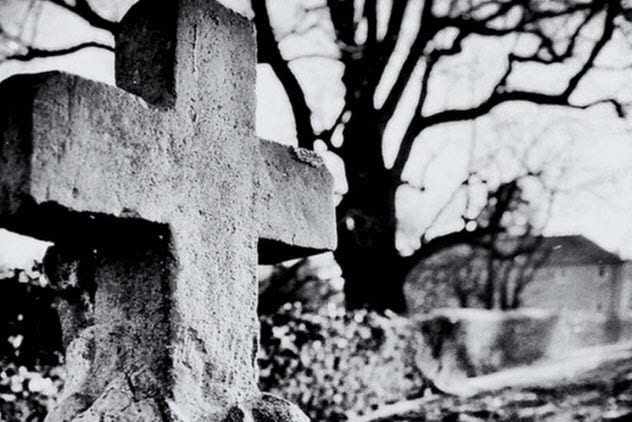
On a bright crisp Sunday morning in autumn 1957, three trainee soldiers walked into the village of Kersey and suddenly found themselves in medieval England. As Andrew MacKenzie explains, one of them, William Laing, who was a keen observer of the countryside, was also certain that the trees and grass changed to the colours of spring during the time slip. As they approached Kersey from the countryside, the three soldiers could see the church with its tower on the hill, and hear the bells ringing. About 100 yards from the church the bells abruptly cut out, and there was a general unnatural silence, with not a single bird call or breath of wind. Houses looked extremely ancient, and there were no people, no tv aerials, telegraph wires or streetlamps. At the stream there were white ducks, but they were (Laing stated) so quiet and lifeless as to appear almost like decoys.
Through the tiny cottage windows the boys saw no sign of life or habitation, save in what appeared to be a butcher’s shop. Here there were three skinned ox carcasses, green with age, surrounded by cobwebs. As they squatted by a bridge over the stream, the soldiers’ sense of ‘eerie sadness’ shifted to a sense of outright evil, as though they were surrounded by hostile watchers. After about 25 minutes in the ghost village, they accordingly ‘took to their heels’ and could suddenly hear the church bells once more, and see smoke rising from chimneys where they had been none. Modern images of the church suggest that it simply could not have disappeared from sight. This may indicate that the soldiers had slipped back some way before the twelfth century, when it was first built.[1]
9 A Police Officer in Liverpool

For some reason, both Suffolk and Liverpool seem to have produced unusually high numbers of reported time slips. As Carl Grove tells it, on Saturday 7 July 1996, an off-duty policeman named Frank was planning to go to Dillon’s bookshop (not then Waterstone’s) to meet his wife. On his way there he was nearly hit by a small 1950s type van with “Caplan’s” on the side. The van-driver actually sounded the horn at him as this occurred. Frank realised that he was in a road, whereas in 1996 that section of Bold Street would have been pedestrianised. Across the road, Dillon’s had turned into “Cripps” and people were dressed in 1940s or 50s style clothing. He followed a girl in modern clothing into the shop, noticing the modern brand name on her handbag as he did so. The shop then turned back into Dillon’s. The girl was also confused, and complained to Frank.
This case is interesting for several reasons. Police officers are trained to be observant and unfanciful; the female witness also saw what Frank saw; and there was clear interaction between the 1940s or 50s van driver and our police officer. Fourthly, after the case was aired on a live radio show by Tom Slemen, people called in to confirm that Dillon’s had been Cripps in the fifties, and that there was a local Caplan’s firm around then also. And this in turn triggered a big response from others reporting similar experiences centred on Bold Street.[2]
8 Watching Baseball from the Past
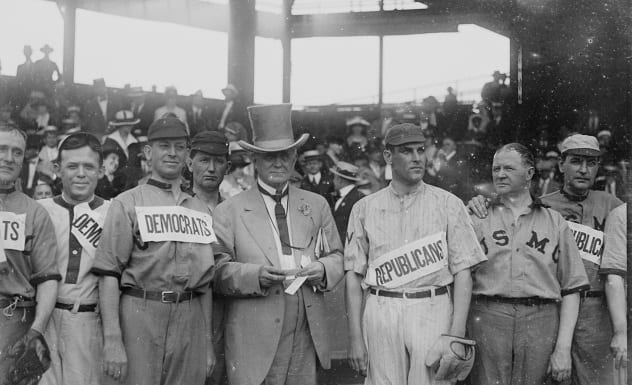
‘In the early 1920s’ (writes Janet Bord) ‘a boy and girl living in Flackton, Arkansas, walked through the silent town one Sunday afternoon when everyone was at the baseball game and took a short cut to the ground, through a pine wood’. Robbie and Ann presently came to a stream they had never seen before, and after crossing it, they were met with completely unfamiliar countryside: ‘gone was the scrubby undergrowth and knobby pine trees, smelly dog fennel and jimpson weed, the chattering sparrows and screaming bluejays.’ Along with the strange silence reported by those soldiers in 1957, the pair also felt a kind of dreamy languor as they walked on, hand in hand.
All the vegetation looked different, whilst ferns were ‘dozens of times larger’ than the ones they usually saw in bogs. On reaching a small rise they saw, ‘off in the distance, the ball diamond and our friends’. They could hear voices from the game, but these sounded tinny and disembodied. Ann and Robbie watched the game until it ended, and presently recrossed the unfamiliar stream. When they looked back, ‘the dream world had vanished.’ Notice that here, those within what seems to be a time slip are also looking forward(?) into the expected scenery of their own time.[3]
7 Five Lost Hours
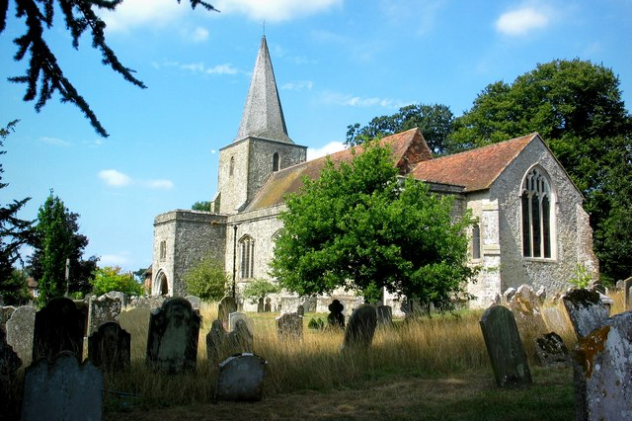
In her book Time Storms, Jenny Randle gives the 1973 account of Paul, then 21 years old. At around 2am he was driving home from a dance, passing through the English Midlands village of Little Houghton. He had drunk very little, knowing he had a long drive home. Just after passing the church clock, he lost all sense of time, and presently found himself on foot at Bromham, many miles away. His car was gone; he was soaking wet (though it was not raining); and it was now 7am. A friend helped him find his car, which was now in a muddy field near Turvey, about 15 minutes’ drive from Little Houghton. The gate into the field was locked, and there were no tyre tracks in the mud.
If it is argued that Paul merely had a black-out or was ‘in some kind of fugue state’, the location of the car and absence of any accident would remain very hard to explain. Many similar versions of this experience have been reported, and a man named Paul Rainbow had one in Little Houghton in 1988, which involved a sudden motorcycle failure, a strange egg-shaped white glow in the next field, and that familiar descent of total silence. He seemed to lose an hour and a half in moments. We are clearly in some very strange territory here. But in both cases the witnesses effectively travelled forward in time.[4]
6 Wuthering Heights
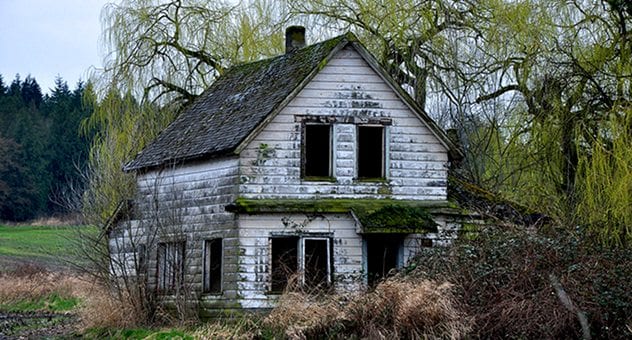
In summer 1959 (writes Richard Davis) the British actor Alan Helm was working in a theatre in Bradford, not far from the famed Brontë village of Haworth. Before performances Helm liked to walk out on the moors which inspired Emily Bronte’s Wuthering Heights. He had done this walk many times in the past four years. One fine day he strode out, reaching the ruin known as Top Withins around lunchtime. Here he saw a man in a deerstalker hat with a shotgun. When the man disappeared, Helm went toward the ruin to look for him. On his way, he suddenly found himself looking down at a big Georgian farmhouse.
He ran down, knocked on the door, and peered into the windows to see a table set for lunch. He could smell pigs and hear cattle. But when he entered the barn it was empty. Looking back up toward Top Withins, he found that it had vanished. He briefly saw the deerstalker man once more; and now, badly spooked, more or less ran back to Haworth. During this experience Helm had checked his watch and found it stopped, at 1.45pm. Just before curtain up he checked it again, as of long habit, and saw that it was telling the right time (5.45) although he had not rewound it. If you have never been to Top Withins, do look at maps and images: the ruin is the only building in sight at this formidably remote spot.[5]
Top 10 Unbelievable Ways The CIA Experimented With Psychic Powers
5 Fast Forward: Chile, 1977.

Jenny Randles recounts a very different military training exercise from Kersey, occurring in Chile on 24th April 1977. A small unit of soldiers is on a training exercise. That night they camp on a plateau at Pampa Lluscuma, 12,000 feet above sea level. Their commander is Corporal Armando Valdes. Just before 4am, a soldier named Rosales sees something strange. He calls Valdes. Coming toward them down the mountains are two violet lights. The ground underneath is glowing oddly. Perhaps these are flares; a mock attack. Valdes wakes the others, and at 4.15 he goes to investigate what is now one large glow on the hillside, a few hundred yards away. The soldiers crouch behind a wall and cover him. Valdes disappears.
So too, moments later, does this violet glow. The soldiers wait in silence. Then, at 4.30, Valdes reappears—from behind them. He is not well. He seems to be sleep-walking. He presently collapses on the ground. At dawn, things get rather interesting. The soldiers, who had seen Valdes shave the previous night, find that he has several days’ growth of beard. And they find that his watch has stopped at 4.30am. It also has a date function, and this reads 30 April. Valdes had severe memory loss and very poor co-ordination, something which is reported, time and again, by people who’ve had similar experiences. They cannot so much as open a door. this sometimes lasts for days. Randles adds that the CIA agents who interviewed Valdes found him convincing and consistent. Some versions of this case infer that Valdes encountered a UFO – which, in the circumstances, is as good an explanation as any.[6]
4 The Phantom Houses of Rougham in Suffolk
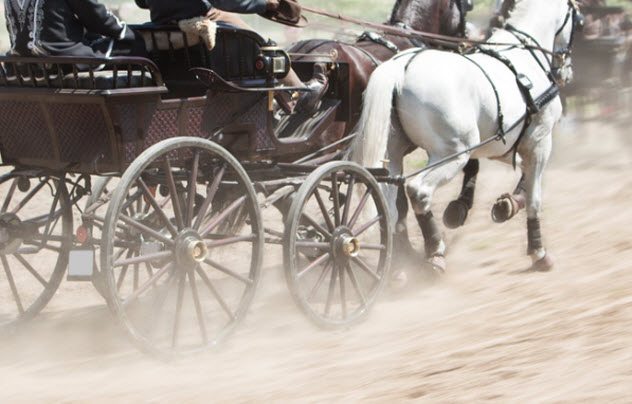
Back in Suffolk, Andrew MacKenzie reprints the account of Miss Ruth Wynne, a teacher who in October 1926 took a walk towards the next village, Bradfield St George, with a female pupil. Quite close to Bradfield’s church they came upon the high walls and wrought iron gates of a grand Georgian house. Much of the building was hidden by tall trees inside the walls. They did not repeat the walk until next spring. On doing so, they found that this grand detached house had completely vanished. Both teacher and pupil confirmed their sighting in reports to the Labour MP, Sir Ernest Bennett.
On a warm June day around 1912, a young boy, James Cobbold was assisting the Rougham butcher, George Waylett, with deliveries by pony and trap. As they drove along Kingshall Street, the air turned cold, there was a sudden loud ‘whoosh!’ and the pony reared in terror and threw Waylett from the cart. For just seconds there appeared a three-storeyed Georgian house with garden and elaborate flowerbeds, before a mist shrouded it, and all was gone. Scrambling up, Waylett yelled, ‘That bloody house! That’s about the third time I’ve seen that happen.’[7]
3 Versailles

On 10 August 1901 two Oxford dons, Eleanor Jourdain and Charlotte Anne Moberly, visited Versailles. Moberly later recalled how, as they were approaching a wood in the grounds, everything ‘suddenly looked unnatural … the trees flat and lifeless, like a wood worked in tapestry.’ They passed a man with the dress and manner of an 18th or 19th century gentleman, who greeted them politely and tried to explain that they were forbidden to pass through this section. He pronounced ‘faut’ as ‘fout’. He had seemed to appear almost from nowhere. They both presently concluded that they had experienced some kind of haunting. They also found that 10 August 1792 was the day on which Versailles had been sacked during the revolution.
Jourdain made another visit on 2 January 1902. Just offer crossing a bridge she was gripped by that same feeling of oppressive unreality, and after seeing people in old-fashioned clothing, heard the sound of silk dresses rustling behind her. She turned and saw no one. A few moments later, though still visibly alone, she felt people jostling past in a crowd from behind, and heard the words ‘Monsieur et Madame’ close to her ear. She also heard the faint music of a band playing. When she later made enquiries, she found that the band had played on New Year’s Day, but not on the 2nd. As with so many well-attested paranormal cases, the Wikipedia account of this affair is another intensely biased view, given by the usual nameless pseudo-sceptics. Do try the book instead, which sold over 10,000 copies when first published.[8]
2 The Armies of the Dead

On the evening of 28 June 1812, between 7 and 8pm, Anthony Jackson, 45, and 15 year old Martin Turner were in the fields at Haverah Park near Ripley in Yorkshire. Turner suddenly cried to Jackson, ‘What a quantity of beast!’ Following his gaze, Jackson responded, ‘Lord bless us! They are not beast, they are men!’ On the summit of a hill there had appeared a body of soldiers in white uniforms, commanded by a figure in scarlet. Marching in various formations, they passed Jackson and Turner about 100 yards away.
A second army, dressed in dark uniforms, appeared behind the first, presently forming an L shape with the white-clad troops. There seemed to be no hostility between the two units, who each numbered hundreds. But after both had passed over the far side of the hill there was a burst of something like smoke, thick enough to hide nearby cattle for around two minutes. Turner later recalled distinctly seeing the arms of the first army glinting in the evening sun. Was the ‘smoke’ somehow akin to the mist which had enveloped that phantom house in Rougham?[9]
1 A Fairy Fair in seventeenth-century England
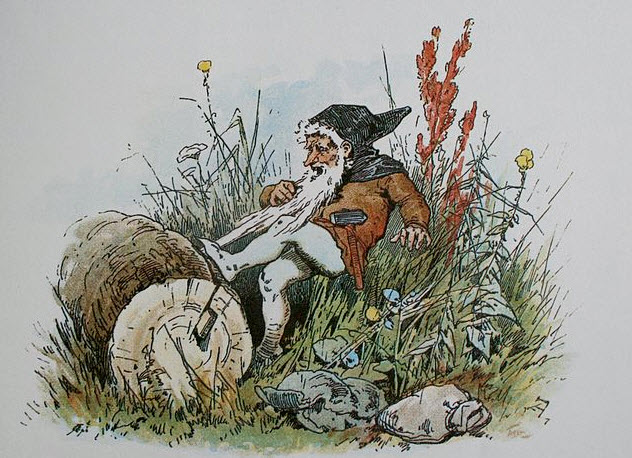
Readers have probably noticed that some of these cases look like ghost sightings. To complicate matters a little further, seventeenth-century witnesses often thought time slips to involve fairies. Around 1635 a man was riding home past a hill called Black Down, near Taunton in Somerset. He suddenly saw on the side of the hill a great company of people, apparently assembled for a country fair. There were ‘Pewterers, Shoe-makers, Pedlars, with all kind of trinkets, fruit, and drinking booths’. Realising that it was the wrong time of year for a fair, he decided to ride into the gathering and learn more.
Having them in view very clearly, when the rider came into the assembly, ‘he could discern nothing at all, only seemed to be crowded, and thrust, as when one passes through a throng of people: all the rest became invisible to him, until he came at a little distance, and then it appeared to him again as at first. He found himself in pain, and so hasted home; where being arrived, a lameness seized him all on one side, which continued on him as long as he lived, which was many years’. This lameness sounds oddly like a partial stroke. Still more telling is the exact echo of that invisible ‘crowding’ and jostling of unseen people which Jourdain reported at Versailles. These weird physical effects, along with the flatness, unreality, depression or sudden cold are some of the most compelling joint features of time slips, across hundreds of years, thousands of miles, and every possible kind of witness.[10]
About The Author: Richard Sugg is the author of 13 books, including A Century of Ghost Stories (KDP, 2017), Mummies, Cannibals and Vampires: The History of Corpse Medicine from the Middle Ages to the Falun Gong (3rd edn, KDP, 2020), Fairies: A Dangerous History (Reaktion, 2019), Bloodlust (KDP, 2020) and The Smoke of the Soul: Science, Religion and the Invention of the Self (2nd edn, KDP, 2020). He posts videos on his research on Twitter and Instagram most days.








